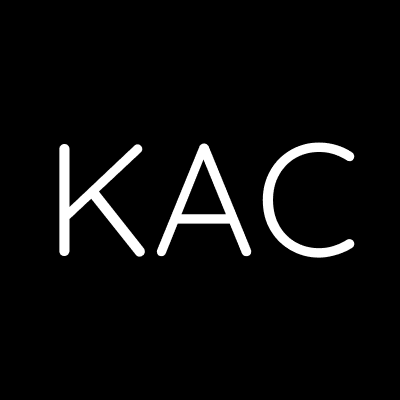My Philosophy
Human-Centered Leadership
Culture eats strategy for breakfast.
Quality work stems from happy, balanced teams. A happy team can independently tackle challenges, while balance allows for effective collaboration. Creating an environment that fosters happiness and autonomy is crucial for success. Empowered team members take ownership and think innovatively, resulting in high-quality work. Each team member's unique strengths contribute to exceptional outcomes when fostering a sense of connection and collaboration. In summary, quality work flourishes when teams are happy and balanced, with autonomy and collaboration as critical factors.
(Peter Drucker)
Product Dev. is an Orchestration
Products should be developed openly with transparency into decision-making and rationale to hold ourself accountable for quality outcomes. Functional Leaders should represent their teams work, advocate for meaningful progress, while making appropriate tradeoffs (for progress).
Fostering Trust through Skill-Oriented Focus:
When teams focus on finding and acquiring the right skills, trust is naturally built among team members. Ensuring that individuals possess the necessary skills for their respective roles creates a sense of confidence and reliability within the team. Each team member understands the unique strengths and abilities they bring to the table, which promotes mutual respect and trust.
Moreover, cultivating a skill-oriented focus allows team members to feel valued and appreciated for their expertise. Recognizing and utilizing each person's skills enhances individual contribution and promotes a sense of collective accomplishment. This shared recognition of skills builds a foundation of trust among teammates, as each member knows they can rely on others to perform at their highest level.
Clarity + Transparency
To achieve a harmonious and well-rounded team, clarity and transparency are crucial. Clear communication of roles, responsibilities, and expectations allows team members to understand their contributions and how they fit into the larger picture. This clarity fosters a sense of purpose, minimizing confusion and promoting a streamlined workflow.
Psychological Safety Required
In today's fast-paced and competitive working environment, it is crucial for businesses to foster a culture of creativity and innovation. However, this cannot be achieved if employees constantly fear losing their jobs. Amy Edmondson, a leadership scholar currently a Professor at Harvard Business School, rightly pointed out that leaders who drive with fear erode team culture and dismantle connection, hindering the potential for great work. To create an environment that encourages employees to bring their best selves to work, leaders must adopt a leadership style characterized by transparency, kindness, and clarity.
(Amy Edmondson)
Kindness
The power of kindness should never be underestimated in the workplace. When leaders treat their employees with empathy, respect, and appreciation, it creates a positive atmosphere that nurtures creativity and innovation. A kind leader understands each team member's unique needs and strengths, helping them feel valued and motivated. By fostering a supportive environment, employees feel safe to take risks, share their ideas, and contribute to the organization's collective success.
Transformational Leadership
As a leader, it is crucial to cultivate an atmosphere that promotes inspiration, collaboration, and innovation within your team. By sharing your vision, highlighting challenges, and fostering an environment of creativity, you can ignite a sense of purpose and motivation among your teammates. Let's explore how these three key elements can collectively inspire and empower those around you.
Accountable Servant Leadership
According to the leadership historian James MacGregor Burns, prioritizing the needs of team members is the key to creating an environment where personal and professional growth can flourish and collective goals can be achieved. This approach involves actively listening to team members and sharing our thought processes and rationales. Doing so fosters deeper connections and empowers our team members to reach new heights.
Driving Happiness through Skill Development
Focusing on skills drives trust and contributes to overall team happiness. When individuals are encouraged to develop and refine their skills, it instills a sense of personal growth and accomplishment. Feeling competent and continuously improving in their areas of expertise enhances job satisfaction and overall happiness within the team.
Team members feel empowered and motivated by providing opportunities for skill development, whether through training programs, mentorship, or cross-functional collaborations. Encouraging personal growth benefits individual team members and promotes a positive team dynamic, fostering an environment where everyone feels supported in their pursuit of excellence.
My Philosophy
Product Development + Design Leadership
I believe product development is a part of a larger problem-solving process. As a reference, figure 1.1 illustrates the seven steps of a typical development process.
Depending on your Product Team’s structure and situation, the Designers often hold some of the unspoken responsibility of defining and prioritizing within the Problem Space, represented by the Discover and Define phases.
I propose we, designer leaders, partner with our product peers to collaborate on filling in the details where we have reasonably high confidence - problem-framing and context.
Equally importantly, I recommend documenting and calling out the assumptions and hypotheses we made along the way.
With XFN collaboration modeled by the team leads, the rest feel comfortable asking questions and proposing solutions.
Product Strategy Spike
Figure 1.1
Understand, Prototype, Build
Figure 1.2
As a manager in product development, I ensure the success of the designers and agile teams.
Illustrated in Figure 1.2, represents the importance of testing with your users early and often throughout the development process.
In addition to a deep knowledge of the user, there’s also the need to orchestrate this process. I believe in a collaborative approach and have leaned into cross-functional workshops.
Figures 1.3 and 1.4, illustrate the phases of each workshop type. Both workshops support teams through the problem-solving process.
Ideation Workshop
Figure 1.3
Figure 1.4



